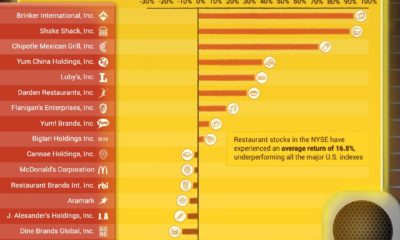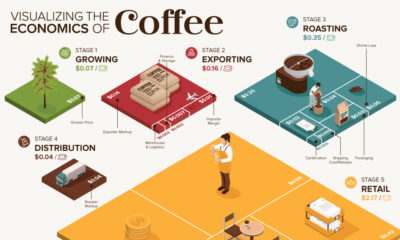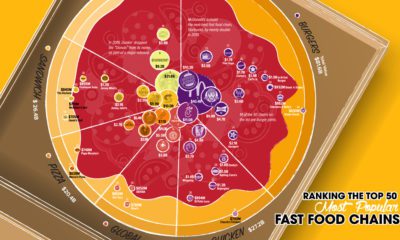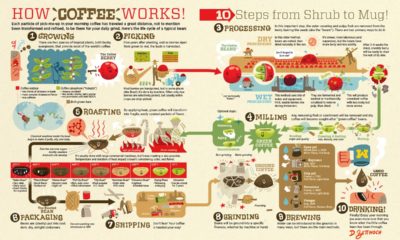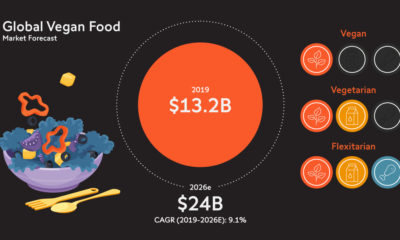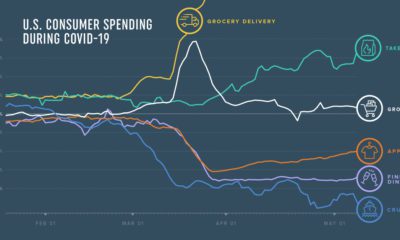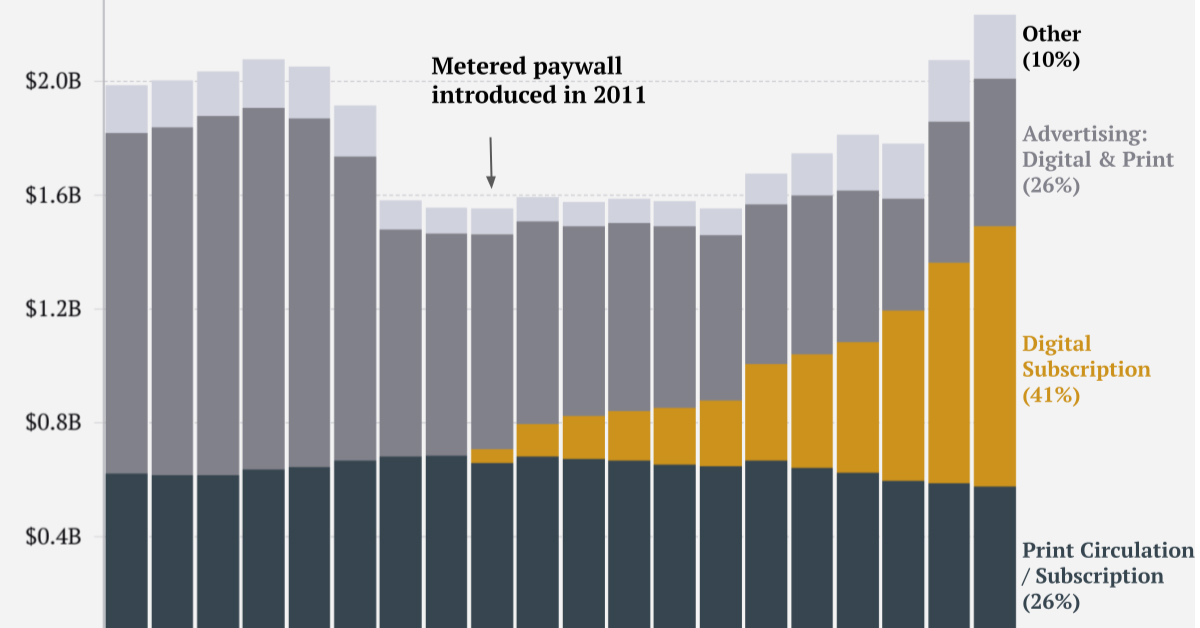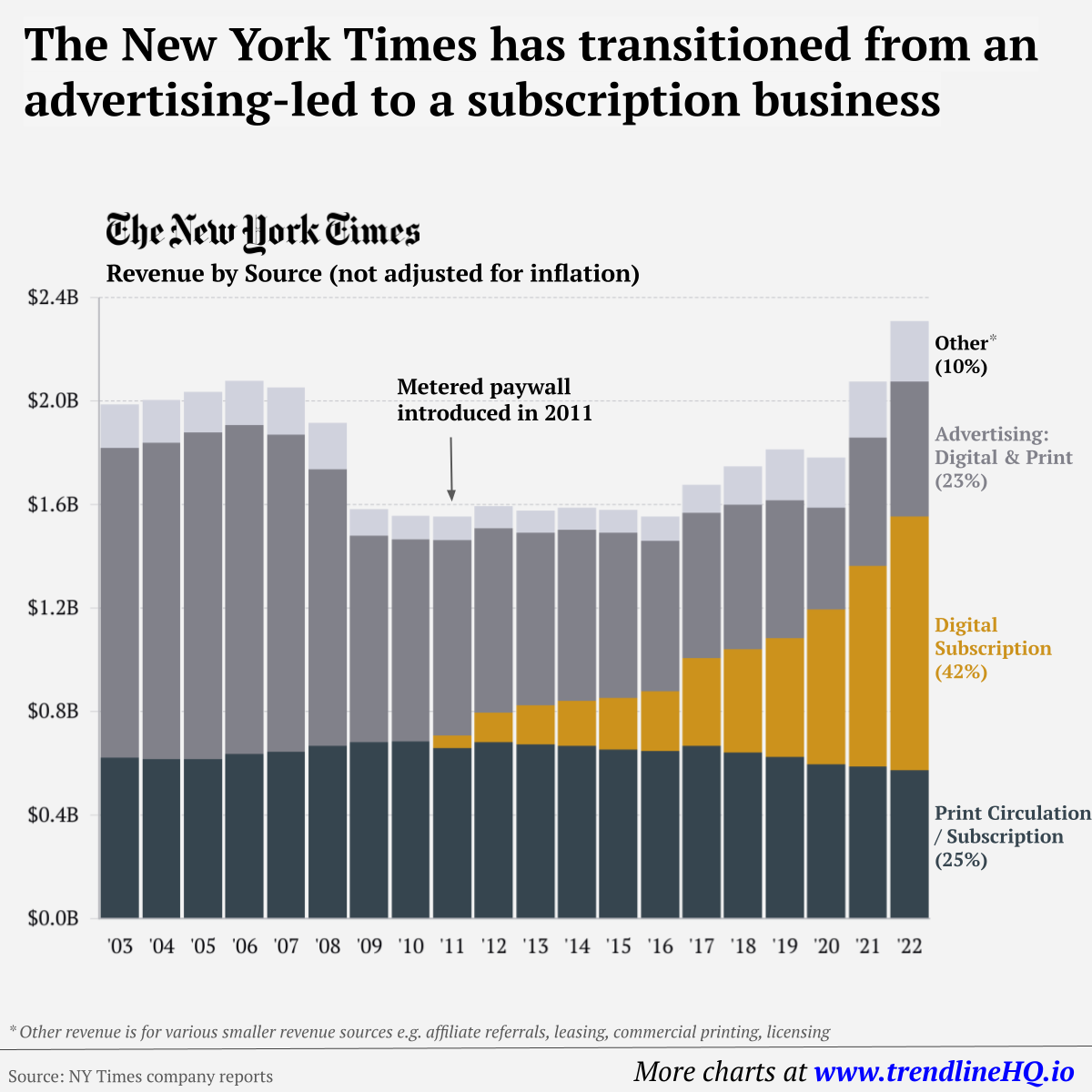McDonald’s is still the most popular fast food brand in America today—with $46 billion in systemwide sales last year. This graphic uses data from a report on America’s top 50 fast food chains by Quick Service Restaurant (QSR) Magazine. The popular brands are sized by their 2021 systemwide sales and broken down into six broad categories: Burger, Chicken, Snack, Pizza, Sandwich, and Global. Note: a number of these figures are estimates. Unofficial figures are noted in the graphic with an asterisk.
The Most Popular Fast Food Companies
It’s indisputable that McDonald’s is America’s favorite fast food restaurant, if not the world’s. McDonald’s sales are almost double the second the place restaurant’s, Starbucks—totaling $46 billion compared to the coffee shop’s $24 billion. Here’s a closer look at the numbers: Most of the top 20 restaurants are extremely well known, like Chick-fil-A in third place and Taco Bell in fourth. Some of these chains, however, will be unrecognizable depending on which part of the U.S. you live in. While Bojangles is ubiquitous in the Southeast, for example, many on the West Coast may have never heard of it. Some of the lower ranking restaurants include Shake Shack (#45), White Castle (#50), and the Canadian-founded Tim Hortons (#47).
Fast Food Industry Trends
America’s fast food industry is expected to generate $331 billion in sales in 2022, and many restaurants are capitalizing on trends shaped in part by the pandemic. Fast food companies are already somewhat ideal for pandemic conditions with drive-thrus, fast service, and a model that doesn’t encourage sitting down to eat. Looking to the future, Starbucks, for example, has claimed 90% of its new stores will feature drive-thrus. Digital sales and transactions that limit contact, making fast food even more quick and convenient, are growing as well. Starbucks’ mobile order service has grown 400% over the last five years. And in 2021, the delivery side of their business grew 30% year-over-year, according to the QSR report. Additionally, the report featured 50 up-and-coming fast food companies to watch in the industry. Here’s a look: Some of these are well-established fast food joints that are simply growing their sales, like Cinnabon, while others are newer to the scene.
America’s Favorite Fast Food
Using the ranking’s food categories, we calculated the total sales in each category from the top 50 to figure out which foods are America’s favorites. The winner is evidently burgers, with $92.2 billion in collective sales. Here’s a look at the breakdown: Sales at Burger restaurants were more than double the runner-up, which was Snacks. After all, nothing is more American than a classic hamburger and fries. on Similar to the the precedent set by the music industry, many news outlets have also been figuring out how to transition into a paid digital monetization model. Over the past decade or so, The New York Times (NY Times)—one of the world’s most iconic and widely read news organizations—has been transforming its revenue model to fit this trend. This chart from creator Trendline uses annual reports from the The New York Times Company to visualize how this seemingly simple transition helped the organization adapt to the digital era.
The New York Times’ Revenue Transition
The NY Times has always been one of the world’s most-widely circulated papers. Before the launch of its digital subscription model, it earned half its revenue from print and online advertisements. The rest of its income came in through circulation and other avenues including licensing, referrals, commercial printing, events, and so on. But after annual revenues dropped by more than $500 million from 2006 to 2010, something had to change. In 2011, the NY Times launched its new digital subscription model and put some of its online articles behind a paywall. It bet that consumers would be willing to pay for quality content. And while it faced a rocky start, with revenue through print circulation and advertising slowly dwindling and some consumers frustrated that once-available content was now paywalled, its income through digital subscriptions began to climb. After digital subscription revenues first launched in 2011, they totaled to $47 million of revenue in their first year. By 2022 they had climbed to $979 million and accounted for 42% of total revenue.
Why Are Readers Paying for News?
More than half of U.S. adults subscribe to the news in some format. That (perhaps surprisingly) includes around four out of 10 adults under the age of 35. One of the main reasons cited for this was the consistency of publications in covering a variety of news topics. And given the NY Times’ popularity, it’s no surprise that it recently ranked as the most popular news subscription.
